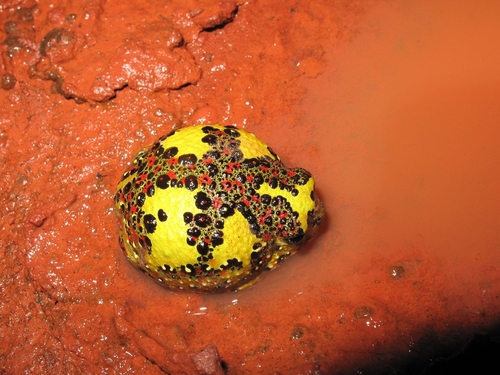
Crucifix Toad
The Crucifix Toad, Notaden bennettii, showcases a striking cross-patterned back. Adapted to arid Australian landscapes, it secretes a sticky substance for defense and prey capture. Its unique survival strategies make it a fascinating component of its ecosystem, thriving in clay-rich floodplains.
Length: 5 cm
Size
Yellow, Multi-colored
Color
Low
Aggression
Least Concern
Conservation Status
Stable
Population Trend
Characteristics
Notaden bennettii, commonly known as the Crucifix Toad, is native to arid regions of Australia. It is noted for its distinctive cross-like pattern on its back, round body, and adhesive skin secretions used for protection and capturing prey. This species primarily inhabits clay pans and floodplains.
Distribution Range of the Crucifix Toad
Notaden bennettii, commonly known as the Holy Cross Frog or Crucifix Toad, is native to Australia. It is primarily found in the arid and semi-arid regions of eastern Australia, particularly in New South Wales and Queensland.
Crucifix Toad's Habitat
Environmental Conditions
The Holy Cross Frog inhabits arid and semi-arid environments characterized by clay or loamy soils. This species thrives in regions with low rainfall and is adapted to a life largely spent underground, emerging primarily during heavy rains.
Ecological Niche
Notaden bennettii is a burrowing frog that occupies a niche as a predator of ants and termites. Its unique adaptation allows it to survive long dry periods by burrowing into the soil and secreting a waxy coating to reduce moisture loss. This toad is well-adapted to the ephemeral water bodies that form during the wet season, where it breeds and lays eggs.
Copyright @ Nature Style Limited. All Rights Reserved.
 English
English